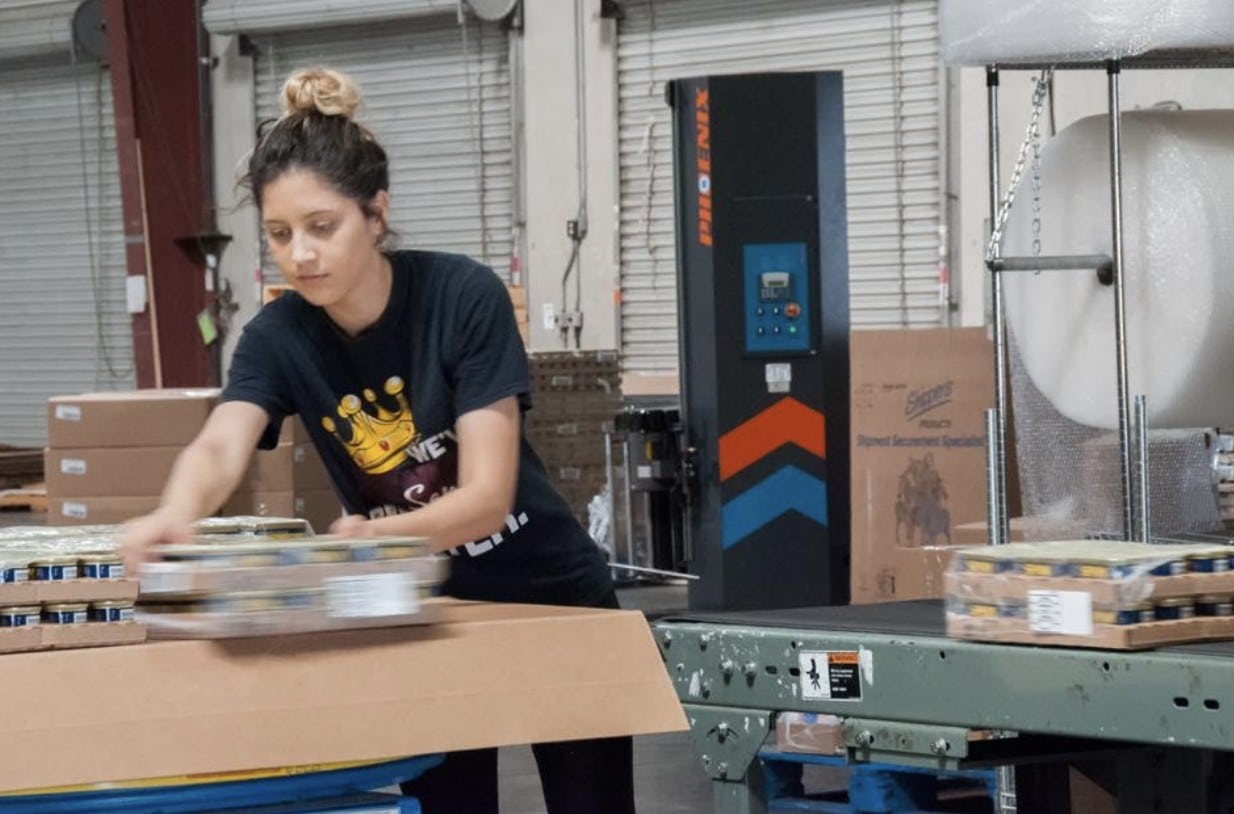Alternatives to Fulfillment by Amazon
When most people think of e-commerce, they think of Amazon. Amazon has dominated the online marketplace for years now and, for the most part, provided good infrastructure for smaller merchants looking to make virtual sales.
Amazon’s fulfillment platform, Fulfillment by Amazon (FBA), is particularly helpful because it doesn’t require any setup on the seller’s part. Amazon will store and ship your products for you, and you have access to one of the largest customer bases in the world.
Does that sound too good to be true? Well, maybe. You’re right to be suspicious. FBA has some serious drawbacks that may make you think twice about using it, although the extent to which that’s true will depend on your circumstances. In this article, we outline some of the reasons to avoid FBA and offer alternatives that may work better for you.
Reasons To Make the Switch
FBA can get expensive quickly, which you’re already aware of if you’ve been using it. Rather than one upfront charge, pricing is decided based on a wide variety of factors:
– The selling plan you sign up for is the first expense. If you have an individual plan, you’ll pay 99 cents per item you sell. If you have a professional plan, you’ll pay a flat rate of $39.99 a month.
– You will also be charged a referral fee for each item you sell, the amount of which depends on what category the product you’re selling falls under. It’s usually between eight and 15 percent of the total price.
– There are fulfillment fees, too, if you have FBA. These are the shipping costs, and they vary from $1.97 per item to $137.32 + $0.91/pound above the first 90 pounds depending on the item’s size.
– Finally, there are assorted additional costs that may or may not apply to you. There are long-term storage fees and high-volume fees, and if a customer requests a refund, Amazon takes a cut of that.
Amazon offers a pricing calculator, but it doesn’t account for the cost of a selling plan, storage fees, shipping costs, taxes, any optional services, or other costs you may incur, so its utility is limited. We don’t recommend using it to make projections about future costs your company may face.
Some unpredictability is inherent in commerce, online or otherwise. However, FBA may be too risky to make the convenience it offers worth it. That will depend on what type of product you’re selling and the volume of business you expect to do.
The other primary reason you may want to consider an alternative to FBA is that you’ll have more freedom when Amazon’s policies and requirements aren’t hemming you in. There are a lot of them, including rules about labeling and packaging.
One of the largest red flags you might notice with FBA is that there are certain products that you can’t sell. Some of the products listed make sense, such as alcohol, counterfeit products, and illegal or hazardous substances. However, Amazon also says that they can forbid the sale of any product they deem unsuitable. What makes a product unsuitable, you might be wondering? Further details aren’t given.
In-House Distribution
Your first thought after disregarding FBA is likely moving the storage and distribution of products in-house. In-house distribution is the option that offers you the most freedom and control over your distribution process. It’s also the option that entails the most work for you and your company.
The first thing to consider when deciding whether or not in-house distribution is right for your business is your product or products. Specifically, think about how you package them. If the packaging for your product is minimal or straightforward, it might be worth outsourcing. Doing more complex, specialized packaging in-house will likely end up being more cost-effective as long as you have or can acquire the necessary materials and technology.
Your employees are also vital to in-house distribution. Without them, the entire process falls apart. Your employees need to be able to handle the increased workload that comes with expanding distribution without sacrificing any time they would otherwise spend on other tasks related to their job descriptions. You may have to hire more personnel or provide additional compensation. Aim to increase efficiency. We recommend looking into a Six Sigma certification, at least for your COO, but also for other relevant parties.
You’ll also need physical space if you want to move your distribution in-house. For small businesses or sole proprietors, that might mean your garage or basement. For large companies, you might need one or more warehouses. The larger your operation, the more space you’re going to need. Costs rise accordingly. Because everyone’s circumstances are different, you’ll have to run the numbers to see whether in-house distribution will be a better financial decision for you than FBA or the other options we’ll cover in this article.
Finally, in-house distribution requires a lot of organization. If your company is established, that might not be a problem. If you’re a start-up or have only just opened a new location, you may already have your work cut out for you with day-to-day business operations. Adding warehousing, distribution, and shipping to an already overwhelming to-do list is a recipe for disaster. The independence that in-house distribution offers is enjoyable and freeing, but it isn’t worth sacrificing quality or devotion to other aspects of your business.
Partner With a Third-Party Logistics Company
If in-house distribution doesn’t work for you or you’d rather not attempt to manage everything relating to it yourself, you can partner with a third-party logistics company (3PL). Third-party logistics is a company’s use of a third party to complete various distribution processes. You might contract with a company that rents warehouse space, packages your products for you, or most other parts of the supply chain.
When you partner with a 3PL, they do some of the distribution work, and you do the rest of it. This division of labor means that you still have moderate control over the distribution of your products, and you aren’t beholden to strict policies. You also have the support you need to successfully fulfill orders.
A significant downside of using a 3PL is that if something goes wrong, customers will blame you. They don’t see the 3PL’s name on products or packaging. If an item arrives poorly packaged, broken, or not at all, it’s your reputation that will suffer.
Outsource to a Third-Party Logistics Company
Rather than partnering with a 3PL, you can outsource your distribution process to one entirely. For a company that wants full-service support for the distribution process, this is the ideal choice. You can focus on your product and customers without worrying about fulfilling orders.
A drawback to outsourcing distribution entirely is the cost. Although your situation will determine whether it’s more affordable than FBA or in-house distribution, quality support comes at a price no matter what. Because your customers will associate the service they receive from the 3PL with your brand name, you want to ensure that you’re using the best possible company for your needs.
What About Amazon’s Market Share?
You don’t have to sacrifice your access to Amazon’s nearly 40 percent share of the e-commerce market just because you don’t want to use FBA. Other options exist, namely Seller Fulfiled Prime (SFP) and Merchant Fulfilled Network (MFN). Both options let you use an Amazon storefront, but you fulfill your orders rather than having Amazon do it for you.
With SFP, your products are eligible for Amazon Prime. Given that 112 million people have Prime, that’s a pretty significant benefit. You still have the chance to appear in the much-coveted Buy Box when shoppers browse Amazon, and your product won’t be filtered out when potential customers check the box indicating that they only want to see Prime-eligible products.
Your company still ships all of your products either from a warehouse you own or a qualified 3PL. There’s currently a waitlist if you’re interested in signing up, and when you do so, you’re committing to providing two-day shipping at no additional cost for Prime customers. Other qualifications exist, including using Amazon Buy Shipping Services for 99 percent or more of your orders and having a cancellation rate of less than 0.5 percent.
If you’re using MFN, your products aren’t Prime-eligible. Your company or the 3PL whose services you’re using are responsible for every part of the distribution process, but orders come through an Amazon storefront. MFN is best suited for smaller businesses that need the flexibility it provides while still taking advantage of Amazon’s audience.
While you aren’t trapped or restricted by Amazon’s policies when you use MFN, there are still drawbacks. The fact that your products aren’t Prime-eligible is the biggest downside to MFN. Prime members make up a large portion of Amazon shoppers, and they pay a reasonably hefty subscription fee to be guaranteed two-day shipping. If you aren’t Prime-eligible and aren’t offering competitive shipping speeds, your business may suffer.
Are you interested in the services a 3PL can offer? Request a quote from PRISM Logistics, Northern California’s award-winning leading 3PL, today.



